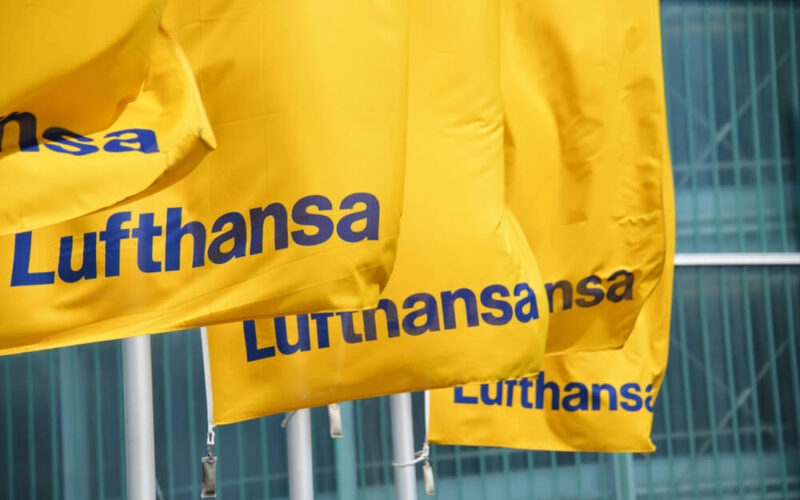The German airline group, which includes Austrian Airlines, Brussels Airlines, Eurowings, Lufthansa (LHAB) (LHA) and Swiss International Air Lines, has announced its Q3 2019 financial results. While the results in the quarter itself show slight growth, year-to-date results, however, are showcasing a very worrying trend, as they are down more than 40% – and the forthcoming winter will be a difficult period for the group, as growth will be limited by financial pressure within Europe and economic stagnation globally.
Lufthansa’s (LHAB) (LHA) Q3 2019 net profit was $1.2 billion (€1.1 billion), an increase of 4% compared to Q3 2018, as revenues increased only slightly by 2% and amounted to $11.1 billion (€10.1 billion). However, profit margins were marginally lower compared to the same period last year – they fell by 1.4% to a total profit margin of 12.7%. The group cited a fuel price increase of $189 million (€171 million) compared to Q3 2018 as the reason for falling profit margins – something that was only offset partially by cost reductions, the press release states.
Year-to-date results are falling – net profit is down by 43% to $1.1 billion (€1 billion) compared to last year’s result of $2 billion (€1.82 billion). Following such developments, the group is limiting the growth of the network airlines, namely Austrian Airlines, Brussels Airlines, Lufthansa (LHAB) (LHA) and Swiss, while the long-haul turned short-haul low-cost carrier, Eurowings will reduce capacity in the 2019/2020 winter season.
“Lufthansa Group is responding to the continued pricing pressures in Europe, which are further intensified by a general slowdown in the global economy”.
Nevertheless, Eurowings is showcasing positive signs, according to the Lufthansa (LHAB) (LHA) group. Q3 2019 Earnings before taxes and interest (EBIT) are up by 39% to $187 million (€169 million). However, nine-month adjusted EBIT amounted to a negative $115 million (-€104 million), compared to the same period result last year of EBIT of -$108 million (-€98 million). Lufthansa (LHAB) (LHA) aims to restore profitability in its low-cost subsidiary by 2021.
Further changes are also coming to Austrian Airlines, Brussels Airlines and Lufthansa Cargo. The Austrian carrier will focus on strengthening positions in its hub in Vienna International Airport (VIEA), closing all decentralized bases. Furthermore, the airline will phase out De Havilland Canada Dash 8 Q400 turboprops, replacing them with the Airbus A320 family aircraft. As of November 7, 2019, Austrian Airlines has 16 Q400 aircraft in its fleet, planespotters.net data shows.
Brussels Airlines also expects to significantly reduce costs, as the administration of the airline will be digitalized. Its fleet will be standardized, which together with improvements in flight operations will contribute to cost reductions, as the Belgian carrier aims to reach an EBIT margin of 8% by 2022.
Responding to the free-falling air cargo demand in the world, Lufthansa Cargo is set to retire ten Boeing MD-11 freighters by the end of 2020. Only two tri-jets will be replaced, as the German carrier plans to add two dedicated Boeing 777 freighters to the Cargo unit, which will result in a fleet of nine Boeing 777F aircraft, further reducing Lufthansa Cargo costs.
Lufthansa profits keep falling
The group has confirmed its outlook for the year and is expecting adjusted EBIT results to be between $2.2-2.6 billion (€2-2.4 billion), with the EBIT margin set between 5.5 and 6.5%. In 2018, Lufthansa (LHAB) (LHA) achieved an adjusted EBIT of $3.1 billion (€2.8 billion) and a margin of 8.3%. All in all, the outlook showcases that the group’s profits are on a downward trend for the second year in a row.
For network airlines, the Adjusted EBIT margin prediction is set to be between 7% and 9% (10% in 2018), with a capacity increase of 4%. Eurowings, meanwhile, will see its margins to remain negative, as it decreases its capacity by 1% compared to 2018.

